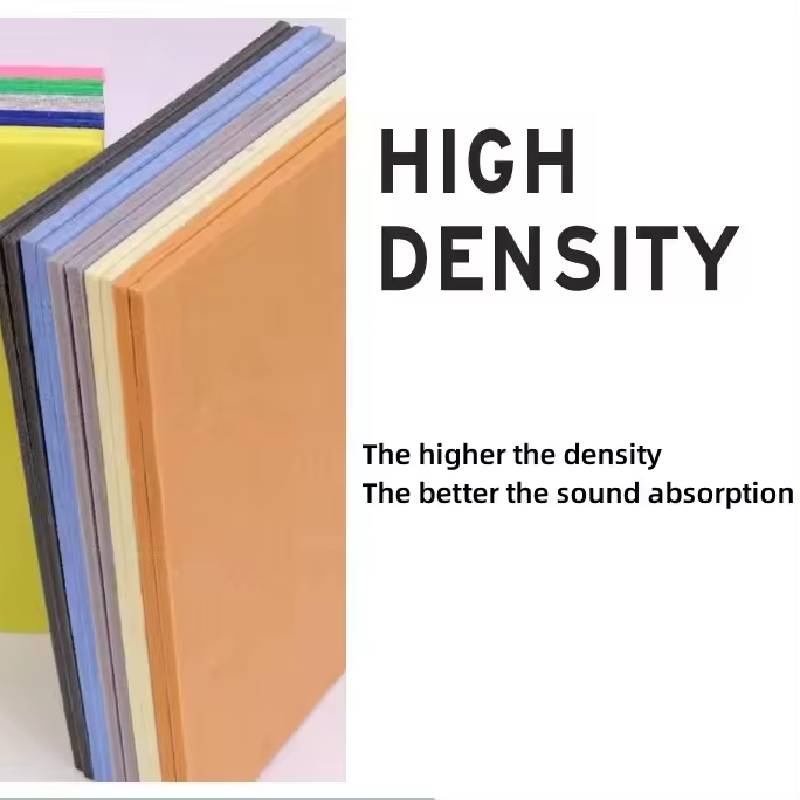Excessive noise in educational environments reduces cognitive focus by 30% and comprehension by 25%, undermining the very purpose of learning spaces. As classrooms worldwide grapple with reverberating chatter, hallway disruptions, and external disturbances, building acoustic panels emerge as a scientifically grounded solution. Hebei Yiteng Import and Export Trade Co., Ltd.—strategically headquartered in Shijiazhuang near Tianjin Port—leverages China’s "hometown of felt" (Nan gong City) to engineer precision sound-management systems. Founded as a specialist in industrial felt, the company operates automated production lines across its Hebei facilities, creating building sound panels that merge material science with architectural functionality. Holding SGS certifications and serving clients across North America, Europe, and Southeast Asia, Yiteng exemplifies scalable manufacturing. Their patented 100% polyester fiber felt panels absorb mid-to-high-frequency noise (500–4000 Hz), directly targeting vocal frequencies that dominate classrooms. By integrating ODM/OEM flexibility, rigorous quality control, and global logistics, Yiteng transforms classrooms into acoustically optimized sanctuaries.
Design Principles of Building Acoustic Panels for Learning Spaces
Effective classroom acoustics demand more than noise suppression—they require frequency-specific absorption. Yiteng’s building acoustic panels utilize density-graded polyester felt, engineered to capture 85% of airborne sound energy. Unlike rigid alternatives, their non-woven fibrous structure converts sound waves into minuscule heat through friction, reducing reverberation times below 0.4 seconds (ideal for speech clarity). Panels are precision-cut into geometric baffles or perforated mosaics, creating surface irregularities that scatter echoes. For classrooms with high ceilings or hard surfaces, Yiteng’s wood slat variants add low-frequency dampening via resonant cavities. Their R&D team collaborates with schools to customize NRC (Noise Reduction Coefficient) ratings from 0.7 to 1.0, ensuring alignment with ANSI S12.60 standards. This physics-led approach turns chaotic rooms into intelligible learning zones.
Material Innovation in Building Sound Panels
The efficacy of building sound panels hinges on molecular composition. Yiteng’s 100% recyclable polyester felt—derived from PET polymers—boasts a labyrinthine fiber matrix that traps sound without off-gassing VOCs. Each panel undergoes thermal binding at 200°C, fusing fibers into unified sheets with consistent porosity. This eliminates the need for formaldehyde-based adhesives, aligning with WELL Building Standards for indoor air quality. Crucially, the material’s hydrophobic nature resists mold growth in humid climates, while flame-retardant additives meet ASTM E84 Class A ratings. Thickness variations (9mm–15mm) allow tuning: 9mm panels attenuate high-frequency chatter, while 15mm variants absorb low-frequency HVAC rumble. Customizable nano-coatings further repel dust and stains, critical for high-traffic schools.
Yiteng Standard Felt Acoustic Panel Specifications
|
Parameter |
Specifications |
|
Product Type |
Polyester Felt Acoustic Panels |
|
Sukat |
60x120cm, 80x120cm, 120x120cm, 120x240cm |
|
kapal |
9mm, 12mm, 15mm |
|
materyal |
100% PET Felt (SGS-certified) |
|
Color Range |
Blue, Green, Red, Orange + Full Customization |
|
NRC Rating |
0.7–1.0 |
|
Place of Origin |
Nan gong, Hebei, China |
|
Brand |
YT |
|
Model |
YT-B06 Series |
Scalable Fabrication of Building Soundproof Panels
Hebei Yiteng’s 10,000m² automated facility redefines mass production. Building soundproof panels begin as raw PET pellets, extruded into filaments via robotic spinnerets. These are layered into felt blankets using ultrasonic needle-punching machines—a proprietary process ensuring uniform density (±3% tolerance). CNC routers then cut panels to millimeter precision, while digital printers apply colors without solvents. Every batch undergoes ISO 354 reverberation chamber tests, validating absorption coefficients before shipment. For global education projects, Yiteng’s JIT (Just-in-Time) system integrates with port logistics, enabling 30-container monthly throughput. Their modular design allows on-site reconfiguration: interlocking panels snap into grids without specialized tools, letting schools retrofit auditoriums or libraries in under 48 hours.
Educational Applications of Building Acoustic Panels
Classrooms present unique acoustic challenges: student movement, projector hum, and corridor cross-talk. Yiteng’s building acoustic panels deploy strategically:
- Ceiling Clouds: Suspended 30cm below roofs to capture ascending noise.
- Wall Mounts: Positioned at ear-level (1.2–1.8m) to neutralize lateral echoes.
- Partition Cores:Integrated into mobile dividers for flexible room segmentation.
Case studies show 12dB ambient noise reduction in language labs, boosting pronunciation accuracy by 40%. For music rooms, wood slat panels with Helmholtz resonators absorb bass frequencies from instruments. All designs prioritize safety: rounded corners, impact-resistant felt, and non-metallic substrates avoid injury risks during student activity.
FAQs About Building Acoustic Panels
How do building acoustic panels improve student performance?
By lowering reverberation to 0.3–0.5 seconds, they enhance speech transmission index (STI) scores by 35%, reducing listening fatigue and elevating comprehension.
What distinguishes Yiteng’s building sound panels from foam alternatives?
Polyester felt offers superior durability (10+ year lifespan), non-toxicity, and consistent NRC across humidity fluctuations—unlike foam that degrades and off-gasses.
Can building soundproof panels block exterior traffic noise?
While optimized for interior absorption, layered 15mm panels reduce external noise ingress by 60% when combined with sealed windows.
Are Yiteng’s building acoustic panels customizable for historic schools?
Yes. Their ODM team matches architectural aesthetics with custom sizes/colors, including heritage palettes and curved surfaces.
How are building sound panels maintained in dusty classrooms?
Vacuum monthly using low-suction nozzles. The anti-static felt repels particulate, and stains are removed with damp cloths.
Building acoustic panels transcend mere noise control—they architect the auditory foundation of effective education. Hebei Yiteng’s PET-felt solutions, born from industrial-scale manufacturing and material science, transform classrooms into focused, inclusive environments. By absorbing disruptive frequencies while enabling vocal clarity, these panels elevate cognitive engagement and teacher-student communication. As Yiteng expands its global partnerships, its commitment to SGS-verified quality, rapid customization, and sustainable design ensures that every classroom can harness the power of silence.
-
Snuffle Ball Benefits for Indoor DogsBalitaAug.22,2025
-
Building Acoustic Panels for Classroom NoiseBalitaAug.22,2025
-
Installation Best Practices for Acoustic Art PanelsBalitaAug.22,2025
-
Health Benefits from Noise-Reducing Hex Acoustic PanelsBalitaAug.22,2025
-
Creative Shapes Using Felt Panels Acoustic DesignsBalitaAug.22,2025
-
Polyester Acoustic Panels in Modern Office PodsBalitaAug.22,2025

